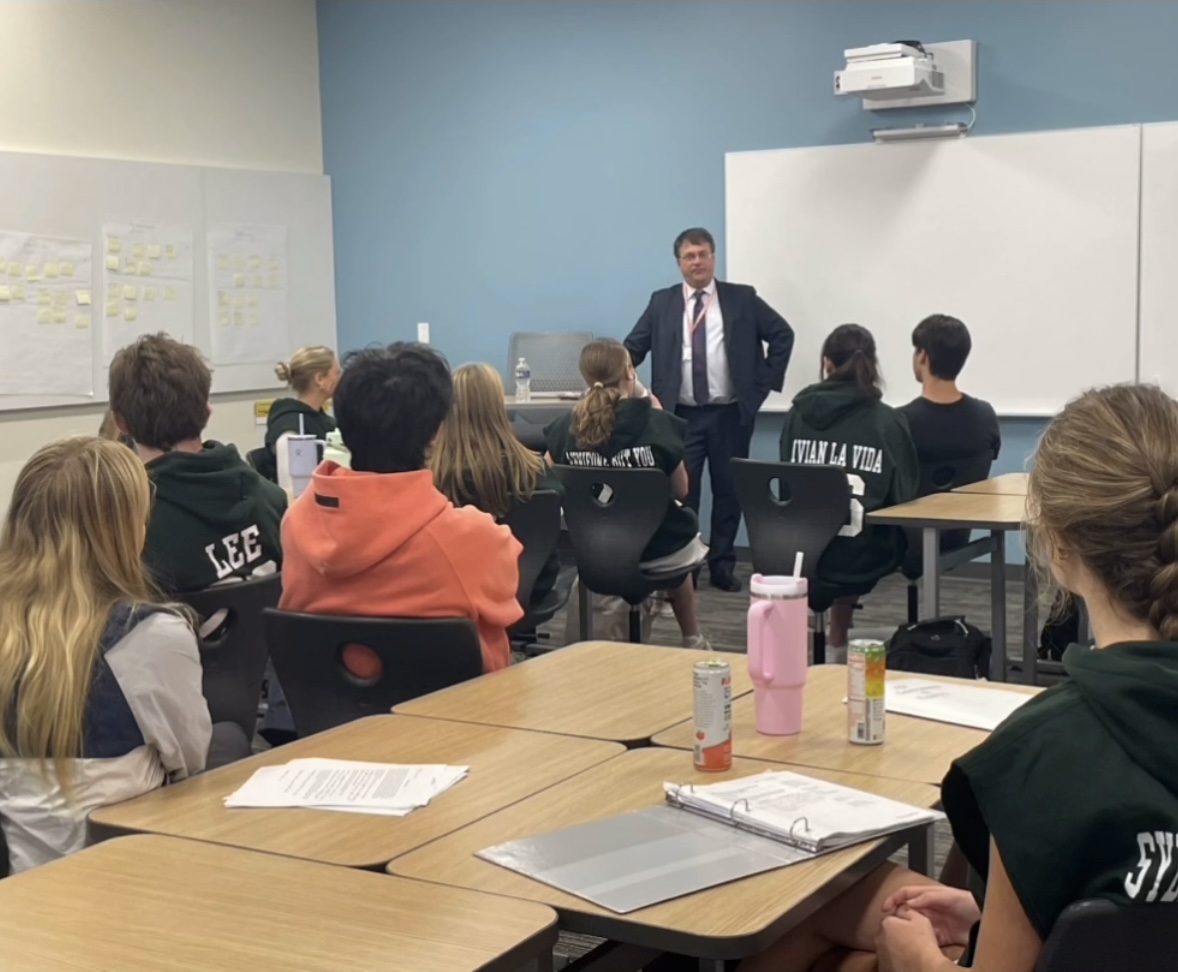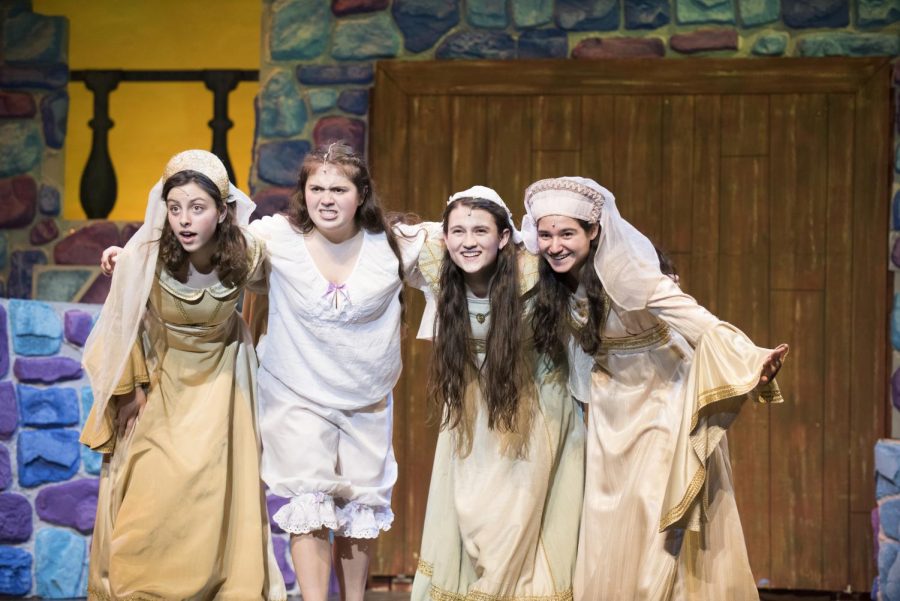“Once Upon a Mattress” gives refreshing twist on classic fairy tale
Musical retelling of “The Princess and the Pea” sends new feminist message
A twist on Hans Christian Andersen’s classic fairy tale, “Princess and the Pea,” brought smiles and laughs to the faces of the audience watching the musical play “Once Upon a Mattress,” performed by Choir Opera from Mar. 8 to Mar. 11.
Marshall Barer’s play starts off with the minstrels singing “Many Moons Ago,” explaining the story of the Princess and the Pea. Being a comedic musical play, it then gets argued by characters Jester and Sorceress, clearing it up and informing the audience of the true story of the princess.
The first plot conflict that we as an audience find out is that Prince Dauntless is lonely on the look-out for his bride to be.
The audience is then introduced the environment of the kingdom. Prince Dauntless’s father, King Sextimus, suffers from a curse making him unable to speak. The curse can only be broken when “the mouse devours the hawk.” The prince’s mother, Queen Agravia, plays the antagonist of the musical. Due to King Sextimus’s cursed situation and everyone’s uncertainty of when it’s going to break, Queen Agravia took over.
Queen Agravia cannot get herself to allow any princess to marry her dear, beloved son. In order to make it difficult for the prince to find the one, the queen develops a “sensitivity” test and gives it to all the princesses that Prince Dauntless had interests in. Previously, she has already tested 11 princesses, all of whom failed.
Senior Lauren Ellis, who played the role for Queen Agravia, said “Being the antagonist was honestly so much fun. She’s kind of a nut job, so it was really fun to just get on stage and be someone completely ridiculous and different from myself. Also, the crown I had to wear was really heavy so it made it a bit easier to be grouchy.”
The people of the Kingdom are in a hurry for a new king, due to the fact that Queen Agravia is a dominating, over-ruling “witch.” Two specific characters that truly worries about the situation of a single prince, a controlling queen and a mute king are the couple of Lady Larken and Sir Harry.
To gain more reasons as to why Prince Dauntless needs to find himself a princess, Lady Larken hits Sir Harry with the news that he is a soon-to-be father. Sir Harry then goes on a journey to once and for all, find Prince Dauntless the love of his life.
Sir Harry comes back to the kingdom with, lo and behold, Princess Winnifred.
Princess Winnifred is introduced into the play as a mess. She had just swam the moat and doesn’t hold “princess-like” mannerisms, making it difficult for the people of the kingdom to believe she truly is from a royal bloodline.
Prince Dauntless immediately falls “in love with a girl named Fred” (Fred being the preferred name of Princess Winnifred), musically expressed in the number “Song of Love.”
“The biggest challenge about Winnifred was becoming completely uninhibited and ridiculous. I had to not at all care about being embarrassed and release my inner goofiness. The whole show was so silly and the entire cast had to embrace it and go over the top,” said senior Gracie Nayman, who played the role of Princess Winnifred.
After finally convincing the queen that Fred is in fact a princess of royal blood, she gets put to the test. Although the test is both absurd and almost impossible, it is a breeze for Fred to pass.
Queen Agravia then tries to cheat her way out of the deal, demanding Fred to leave but the passive, mama’s boy Prince Dauntless finally shows that he’s had enough and tells her “no.” As soon as the empowering moment passes, King Sextimus gains his voice back while Queen Agravia loses hers.
The show was not only entertaining but nostalgic, being a spin off on one of my favorite fairy tales. However, I preferred this take on the classic tale because it was empowering as well as comedic. I loved how a prince fell madly in love with a princess named Fred and I loved how it didn’t close with the typical “happily ever after” ending but instead, with the rat devouring the hawk.
Senior Maliha Sayed who played Lady Larken said, “The play is primarily a goofy comedy meant to entertain people so there aren’t a lot of deeper emotional messages but I also feel as though we could all be inspired by the spirit of Winnifred, because she is nothing but herself. All she had to do was exist as she was and she ended up with the happy ending she wanted. It’s kind of sweet for me to think about it that way.”
“The main story surrounds a mother’s attempted sabotage of the girl that really loves her son. This girl, Princess Winnifred, is not a conventional princess. She’s strong, blunt and very charismatic,” said senior Frankie Nayman who played the role of Sir Harry.
“The director also wanted to shift the power dynamic in the relationship between my Sir Harry and Lady Larken. Rather than seeing Larken becoming pregnant and dependent on Harry to rescue her,” Nayman said. “We tried to portray the story so that it was clear that Larken was using the pregnancy to her advantage and manipulating Harry into what she wanted. Overall, the message was intended to be a very feminist one, which I think is wonderful.”








































